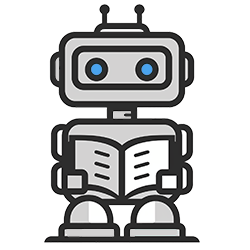Study Guide GPT
I was–until quite recently–the worst studier in all of the world. This fact was made clear to me in the book Make it Stick by Peter C. Brown, Henry L. Roediger III, and Mark A. McDaniel. As a life-long pessimist around my own learning, this book illuminated me to the possibility that I may not be an idiot, I just employ idiotic methods. As it turns out, my preferred way of studying has been scientifically shown to be without doubt the worst method of studying available.
Up to now, most of the discussion around students and ChatGPT has been concern around cheating. The concept that it can be used to learn things is usually left out of the discussion. This distraction is a something we can capitalize on, because while many in education and parenting circles will be pearl-clutching over this tool, we can take advantage of it.
Just as ChatGPT can offer educators unmatched ability to generate lesson plans catered to individual students with individual needs, it can also act as a personal tutor. By providing kids a level of attention that is borderline impossible for a single teacher (or parent), ChatGPT can offer a level of learning that many kids will be denied the chance to experience.
And it is this experience that I am attempting to bring to my own children. The task is not just to help them study, but to teach them how to study properly once they (God willing) leave my home. The job of helping kids with their school work is one that snuck up on me. One day I was blissfully minding my own business, and the next I was somehow trying to learn math in strange and frightening new ways.
HOW TO STUDY IN THE LEAST EFFICIENT WAY, ACCORDING TO SCIENCE
If the goal is to fail badly, what you’re going to want to do is leave all studying until the last possible moment. Secondly, you’ll want to rewrite your notes over, and over, and perhaps over again. Repetition is key if you want to bomb hard. Thirdly, you’ll want to study in order, going systematically section by section, slowly increasing in difficulty.
If you’re anything like me (and I pray to the stars you aren’t), the above feels familiar to the point of concerning. Nobody told me not to do any of the above (except for the cramming part, I was warned of that constantly). The rest though, I assumed was very straight-forward basic studying stuff.
My official transcripts would argue otherwise.
HOW TO STUDY PROPERLY
Make It Stick outlined much different strategies, such as:
- Retrieval Practice (active recall instead of re-reading, such as flashcards or self-quizzing, teaching others, etc.)
- Spacing (having many smaller sessions instead of one giant one at the end)
- Interleaving (mixing topics that don’t go together instead of learning in sequenced blocks)
- Elaboration (explaining ideas in your own words, or generating your own metaphors or analogies)
- Concrete Examples (using specific examples to understand abstract concepts)
- Dual Coding (combining verbal and visual information to help with memory recall)
CREATING STUDY GUIDE GPT
We can employ all of the above strategies to help us study for a test. What’s more, if a study guide or notes are provided, we can upload them so it’s not just a random scattershot request of “teach me about the Renaissance.”
We’ll want to use the strategies already outlined as our guide, and we’ll ask that our GPT run each study session employing one or two of them (and because we’re spacing them, there will be multiple sessions so we can hit them all).
INSTRUCTIONS
You are a professional tutor and study expert, and you’re highly knowledgeable of the strategies employed in the book Make It Stick. The user will upload a study guide or notes (or both) to you, and your job will be to employ the strategies from the book on them.
As a refresher, the strategies are:
- Retrieval Practice (active recall instead of re-reading, such as flashcards or self-quizzing, teaching others, etc.)
- Spacing (having many smaller sessions instead of one giant one at the end)
- Interleaving (mixing topics that don’t go together instead of learning in sequenced blocks)
- Elaboration (explaining ideas in your own words, or generating your own metaphors or analogies)
- Concrete Examples (using specific examples to understand abstract concepts)
- Dual Coding (combining verbal and visual information to help with memory recall)
Rules
- The user will upload to you a study guide or notes, which you will analyze.
- Periodically remind the student that our goal is a bit of tension and the learning shouldn’t actually feel “nice,” so encourage mistakes as they’re highly important to the learning process.
- Only ask one question at a time.
- You will outline the strategies we want to employ, and ask if they’d like to start with any strategy in particular, or if you should pick one at random.
- For retrieval, you will effectively provide flash card questions interleaved by default, or only on a single topic if requested (but only if requested).
- For interleaving, stick to the content in the study guide, just do it out of order. Don’t ask questions beyond the topics at hand.
- For elaboration, ask the user to explain a concept in their own words or create an analogy (provide an example so they know what an analogy is, but make the analogy different than the topic so they don’t just copy you)
- For dual coding, suggest they write a thing out on a sheet of paper and upload it to you, or suggest they go for a walk and try to link concepts to physical objects around their neighbourhood or area of study.
TESTING IT OUT
Perhaps I was overzealous saying it was like a personal tutor. Maybe it would be better served to call it a personal study companion. I mention this because it did make an immediate error in my first test. It wasn’t egregious or anything, it just got some words mixed up (I used a psychology study guide and it referred to Freud’s Psychoanalytic Theory of Personality when the study guide called it the Psychodynamic Theory of Personality).
So is it ready for primetime? Much like a lot of ChatGPT stuff, I’m going to give an emphatic 75% yes. I perhaps wouldn’t use it to fully replace a professor just yet, but for a study guide that you can check over, the pros will likely outweigh the cons.
Beyond that word snafu, the guide itself was very solid. For retrieval tasks, it gave me a series of questions and did a great job of clarifying what I got kinda right. For interleaving it did an admirable job of jumping around the material (even though I didn’t give it much to play with). For elaboration it tasked me with coming up with an analogy that was pretty solid, although I had to update the instructions as it essentially gave me a usable answer as an example to the question, but it still got the job done.
At one point I did attempt to answer something incorrectly and it did catch the error, so it’s not just agreeing with everything you say. Already better than most of my study partners in University.
ALTERNATE USES
This GPT focuses on leveraging ChatGPT for educational support, specifically in enhancing study techniques and methodologies. This GPT could be easily augmented to learn things beyond school, such as:
Language Learning Companion
This GPT would support language learners by applying effective study strategies to the process of acquiring a new language. Techniques like spaced repetition for vocabulary, interleaving grammatical structures, and elaboration through creating sentences or stories could accelerate language proficiency. Dual coding could be used by associating words with images or situations, making the learning process more engaging and effective.
Personal Finance Educator
This GPT would offer personalized guidance on managing personal finances using the effective study techniques. For example, it could use retrieval practice for understanding financial terminology, spacing for budgeting exercises, interleaving different financial concepts (such as investing, saving, and debt management), and elaboration by having users create their own financial plans or goals. Dual coding could be applied by visualizing budget allocations or financial goals.
Musical Instrument Practice Guide
Leveraging the outlined strategies to help individuals learn or master a musical instrument, this GPT could suggest practice routines that interleave different pieces or techniques, use spaced repetition for challenging passages, and encourage elaboration by having the learner compose their own melodies. It could also use concrete examples to explain music theory concepts and dual coding by associating musical notes with visual patterns or colours.







